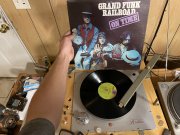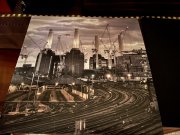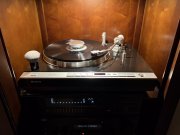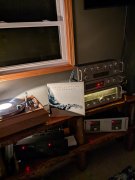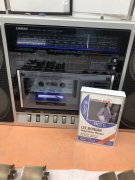J!m
Veteran and General Yakker
For those interested, the recording process has three distinct steps:
Tracking- the actual capture of a performance or individual instruments. Mic to preamp to tape. Maybe a gate or rough EQ but essentially “raw” to tape.
Mixing- taking the tracks, and adjusting them individually to get the sound you want. Placing them on the stage (panning) adding effects, EQ, etc to define the sound and placement.
Mastering (AKA mix down)- is taking the mix and capturing it on two-track tape for delivery to the cutter. Levels are balanced usually, any unusual issues are dealt with to prepare for the cutter.
Insaw remaster for digital, and that is required. Ideally the tracking tapes are re-played to create the digital master. This is done because many limitations of vinyl are not present with digital and you can open it way up. Problem is, they still often compress the shut out of it to make it “loud”.
Tracking- the actual capture of a performance or individual instruments. Mic to preamp to tape. Maybe a gate or rough EQ but essentially “raw” to tape.
Mixing- taking the tracks, and adjusting them individually to get the sound you want. Placing them on the stage (panning) adding effects, EQ, etc to define the sound and placement.
Mastering (AKA mix down)- is taking the mix and capturing it on two-track tape for delivery to the cutter. Levels are balanced usually, any unusual issues are dealt with to prepare for the cutter.
Insaw remaster for digital, and that is required. Ideally the tracking tapes are re-played to create the digital master. This is done because many limitations of vinyl are not present with digital and you can open it way up. Problem is, they still often compress the shut out of it to make it “loud”.

